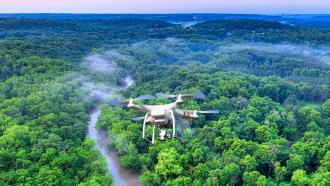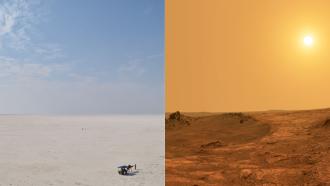
The Indian summer monsoon, which lasts from the end of May to September, is a massive weather system that accounts for approximately 70% of India's annual rainfall, making it crucial for the country's water supply and agriculture. These rains can, however, bring both life-giving water and devastating floods, affecting both rural and urban areas alike. The weather is a chaotic system, meaning that small changes can have significant consequences, leading to a completely different forecast. As a result, researchers continually seek ways to improve the accuracy of predictions.
Recently, researchers from the Indian Institute of Space Science and Technology (IIST), Thiruvananthapuram, and Vrije Universiteit, Amsterdam, the Netherlands, have been collaborating to improve weather monitoring and enhance our prediction capabilities. Their study identifies ideal locations for installing weather-monitoring equipment to obtain the most accurate information for improving forecasts.
Did You Know? The Indian monsoon is considered the most prominent of the world's monsoon systems, significantly impacting India and its surrounding water bodies. India's diverse topography, including the Himalayas, the Thar Desert, and the Western Ghats, significantly influences the monsoon's wind patterns and rainfall distribution. The Himalayas, for instance, act as a barrier, forcing moisture-laden winds to rise and release precipitation. |
The team employed a technique known as ensemble sensitivity analysis. The method helps them understand how minor errors or changes in the initial conditions of these forecasts can accumulate and impact the final prediction. They examined five years of data on the Indian summer monsoon from the THORPEX Interactive Grand Global Ensemble (TIGGE) international weather forecasting project. This project involves many countries sharing their weather forecast data, allowing for much more detailed analysis. By analysing these forecasts, they could pinpoint specific regions where gathering more data would have the most significant positive impact on predicting rainfall in different parts of India. They focused on areas such as the Western Ghats, the Ganges Basin, the Bay of Bengal, and the Northeast region, all of which are critical areas for monsoon activity.
For regions like the Western Ghats, they found that rainfall forecasts are most sensitive to weather conditions occurring upstream, meaning in areas to the west, such as over the Arabian Sea. Placing more weather sensors in these upstream locations could significantly improve rainfall predictions for the Western Ghats. Similarly, for the Gangetic basin and the Northeast, the forecasts were more sensitive to conditions within those specific regions. This means getting more localised data from on-location weather stations.
The study also examined various weather variables, including sea level pressure, wind, and humidity, and found that the sensitive regions could change depending on the variable being focused on. For example, predicting rainfall may benefit from humidity data from one area, while predicting wind patterns may require pressure data from another. This tells us that the best strategy for gathering data isn't one-size-fits-all; it depends on what you're trying to predict and where.
This is one of the first studies to apply a detailed analysis to the Indian summer monsoon season, which is vital for India's agriculture and economy. However, they also point out that the sensitive regions can shift depending on the specific weather patterns of a given year and the particular forecasting model used. This means that while they've identified key areas, ongoing research and testing with real weather data will be important to fine-tune these observation strategies.
The practical implications of this research are significant for society. By identifying the most impactful locations for weather observations, scientists can help optimize where weather stations, buoys, and other monitoring tools are placed. This leads to more accurate monsoon forecasts, which can help farmers make better decisions about planting and harvesting, aid disaster management agencies in preparing for floods or droughts, and ultimately contribute to the economic stability and well-being of millions of people who depend on the monsoon.
This article was written with the help of generative AI and edited by an editor at Research Matters.






